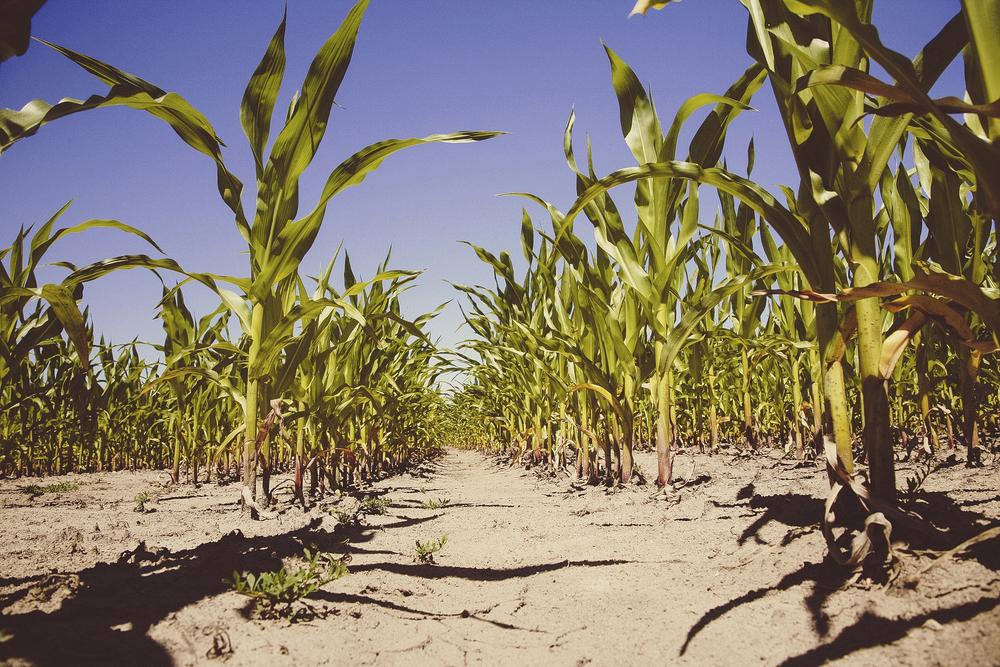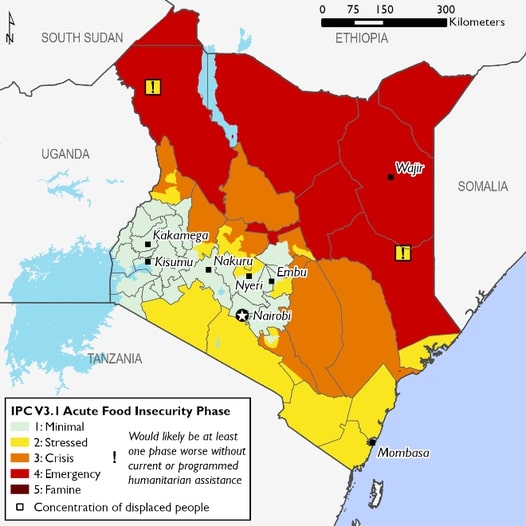
By George Munene
According to a World Food Programme report on Kenya’s food security outlook; drought, rising fertiliser prices, and armyworm attacks have led to a steep drop in agricultural production.
Across marginal agricultural areas, the below-average and poorly distributed long rains resulted in below-average planted acreage and moisture stress. Crop failure was observed in Taita Taveta, Makueni, Kitui, Tharaka, and Embu (Mbeere).
The reduced cropping activities are resulting in below-average food availability and income from crop sales and casual wage labor opportunities.
In sampled regions like Nyeri (Kieni) and Meru (Meru North), maize production was 40-49 per cent below, while in Taita Taveta maize production was less than 17 per cent of the average.
Milk production in the pastoral areas in July ranged from 50 to 88 per cent below average across most pastoral areas.
By the end of May 2022, around 2.43 million livestock have likely died since the start of the drought, 17 per cent in Samburu, 11.3 per cent in Mandera, eight per cent in Isiolo 7.6 per cent in Lamu and Marsabit, and 6.8 per cent in Garissa.
Related News: Horn of Africa facing the worst drought in 41 years
Related News: New drought-tolerant forage pearl millet an answer for arid dairy farmers
The sharp rise in fertilizer prices following the start of the conflict in Ukraine and high fuel prices also contributed to a drop in the area planted by farmers due to the high cost of cultivation. Fertilizer prices in May were 60 to 200 percent above 2021 prices despite the government providing subsidized fertilizer prices similar to 2021.

Projected food security outcomes, September 2022 to January 2023
Reports from the Ministry of Agriculture indicate that the acreage planted for the long rains (March-May) maize crop is within the five-year average in the western region and six to 12 per cent above average in the coastal and central marginal agricultural regions. However, in the Rift Valley and Nyanza regions, farmers planted six to 10 per cent less than the average, with farmers in the Upper and Lower Eastern regions planting 15 to 31 per cent less than average.
In the Rift valley region, an African armyworm attack impacted an estimated 400,110 acres (around 60 per cent of total acreage) but was successfully controlled. In the central region, African and Fall armyworms affected around 56 per cent of the crop.
Generally, the Fall and African armyworm infestations are raising concern among farmers about their impact on yields. Still, all of the infested counties have received pesticides from the Ministry of Agriculture.
Related News: Sh18M grant enables Garissa farmer establish thriving grass business
In the marginal agricultural areas, the main crops planted were maize, beans, green grams, and cowpeas. Generally, the area planted was below average due to the late onset and poor rainfall distribution, with farmers having to replant their crop
The March and April long rains were below-average and delayed. They we're also marked by dry spells.
However, farmers in high and medium rainfall regions of the North and South Rift, and Western and Central Kenya saw improved crop conditions on resumption of the rains in late March and late April. This is expected to drive near-average production, particularly for maize.